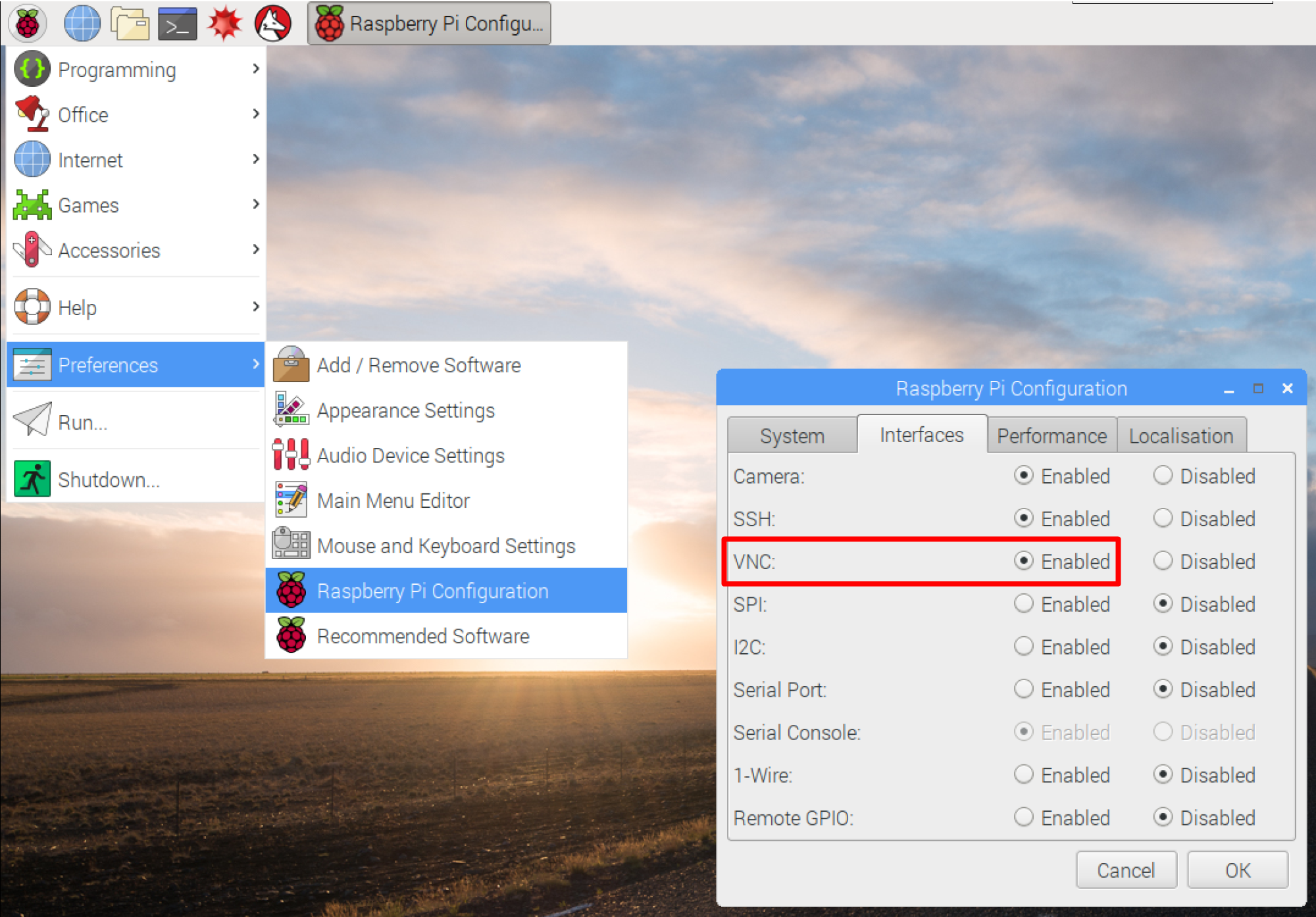
Select Menu > Preferences > Raspberry Pi Configuration > Interfaces. On your Raspberry Pi, boot into the graphical desktop. You can do this graphically or at the command line. Sudo apt install realvnc-vnc-server realvnc-vnc-viewerĪt anytime, you can launch the Xorg Display Server by typing in: startx If you are not using a desktop you can install it from the command line as follows: sudo apt update VNC is already installed on the full Raspberry Pi OS image, and can be installed via Recommended Software from the Preferences menu on other versions. To install the basic RPD desktop environment, type in: sudo apt-get install raspberrypi-ui-mods Essentials such as settings, task manager, terminal and file manager are included. The basic RPD desktop environment is the same as the one included in the regular Raspbian distribution, but without preinstalled applications. The backend of RPD is LXDE, which is a great choice as it is known for its low memory usage. It is designed to be easy to use, which is why it looks simple. RPD is a desktop environment designed by the Raspberry Pi Foundation. To use VNC you first need to install a GUI desktop You will create a new connection with the given IP address of the Raspberry Pi on your local network (you should be able to know it using ifconfig) and using the admin user credentials created on VNC server as the following: In my case I created an administrator user (default username was admin) In Remmina on Ubnutu VNC Server: allows you to remotely control the desktop interface of one computer, while VNC Viewer transmits the keyboard and either mouse or touch events to.

Go to the options on the VNC Server on Raspberry Pi 3 and you should have the sudo credentials when you started VNC serverĬhange the security authentication to VNC Password as shown belowįinally you need to add a user to use it to connect. Unknown authentication scheme from VNC server: 13, 5, 6, 130, 192 In VNC Server on Raspberry Pi 3

Then type in echo "Starting VNC server on port 5901"Ĭtrl+o, enter and ctrl+x to save and exit.Trying to connect to VNC on Raspberry Pi 4b from Ubuntu gives the following error: To start the server everytime you boot your pi, you can do the following: sudo nano /etc/rc.local You can now connect using the hostname/ip of your pi from your viewer raspberrypi3:1 Autostart With RealVNC, you can still access out of reach Raspberry Pi remotely using another computer, smartphone, or tablet. Vncserver :1 -geometry 1024x1024 -depth 24 Connect Once you've set up some options/passwords it will then start an instance for you, we'll go ahead and kill it then start up a new one with a better/your own resolution vncserver -kill :1

Then run it to configure it tightvncserver How to connect to a Raspberry Pi using VNC Viewer or SSH on Windows 10/8/7 Or how to connect to a Raspberry Pi to a laptop using Ethernet Cable How can. Then we can move on to getting tightvnc installed sudo apt-get install tightvncserver This will show you what the name of the package is you need to install, then un-install it: sudo apt-get remove realvnc-vnc-server Install TightVNC If you want to do away with it also, just follow these instructions, in terminal or over SSH: dpkg -get-selections | grep vnc This is not a grteat user experience and it's not in the RaspberryPi's way of doing things eother. Turns out there a lot new! Some crappy licensing scheme whereby you have to sign into an account through their website before you vnc onto anything. I've never really been a fan of RealVNC, but you know it's been over a decade now and I'm not that set in my ways that I can't change so I installed it to see whats new.

No probs I thought - juust install the RealVNC viewer on my windows pc and give it a crack that way. After a bit of research it turns out that RealVNC has upped their security protocols and TightVNC is no longer cross-compatible. I duly fired it up only to receive an error message along the lines of 'No configured security type is supported'. I came across my old shortcut on my windows machine to vnc onto the Pi which prompted me to have a go connecting to my new RaspberryPi3.


 0 kommentar(er)
0 kommentar(er)
